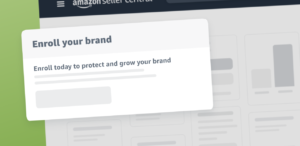
Unlocking Amazon Success: Mastering Total ACOS Optimization
Introduction: In the dynamic realm of Amazon advertising, success hinges on mastering key metrics, and
When we wrote “The Beginner’s Guide to Lifecycle Marketing”, we knew we had so much more to say on the topic. And so, with this blog post, we’re delving deeper into the subject of brand awareness — stage 1 of Lifecycle Marketing.
According to Pam Moore, people need to see your brand at least 5–7 times before they remember it. That means you need to put your brand out there in front of your audience, often enough for them to come across it a few times. That is, essentially, what sums up the strategy of brand awareness campaigns.
Brand awareness is a measure of how aware, cognizant, familiar your audience is with your brand. Have they seen it around? Do they know it exists? They may not have interacted with you yet, but will they remember your logo when they see it? Essentially, brand awareness is the result of successful branding activities that build brand recall.
Think of some of the most successful brands in different verticals — Colgate in toothpaste, Apple in electronics, Amazon in everyday commerce, DHL in shipping, GAP in apparel…you’ll be able to place the colors, fonts, and logos of these brands in just a couple of seconds. And when it comes to choosing between these brands and unknown competing brands, chances are you’ll go for these just because they are familiar and feel safer.
That’s the power of brand awareness and brand recall.
The great news is that with a little creativity and some brainstorming, you can use creative content and approaches to build awareness & recall what your brand needs.
Need some ideas? That’s what we’re here for!
Infographics are a type of content you create to provide in-depth information to your potential customers, at a glance. You’ll have seen infographics all over the internet, explaining the ‘best ways to do XYZ, ‘how to achieve xyz’, or ‘why ABC is better than XYZ’s.
These graphics stand out, impart information and add value to your audience — which makes them all the more memorable when it comes to your brand.
Before you get started, keep these tips in mind for creating an infographic that works:
When working on Mason, all you have to do is upload your brand and creative guidelines once, then sit back and allow the platform to help you create beautifully branded content. Complete with layout inspiration. Ready to give it a try?
Once you have an infographic you’re ready to publish, don’t just add it into your blog — promote it on social media, in your emails, etc. Remember, your content is only as good as your distribution strategy!
There’s a reason why image and video-led platforms such as Instagram and TikTok are doing so well today. People are usually more attracted towards visual content — it’s usually entertaining, easy to understand (a picture is worth 1000 words!), and massively addictive.
Just think of the millions of people who scroll through the black hole that is their Instagram feed, for hours a day. Or the millions who follow TikTok trends, make their dance videos, and practice steps in front of the mirror.
Visual imagery is powerful stuff and, what’s more, important for brands, is that part of its power lies in its high shareability.
People love to share things that make them feel warm, entertained, informed, or empowered — they want to pass that feeling onto friends and family. But, because very few people will take the time out to read, the best bet is for you to package this content in visual, shareable formats.
Remember to publish these on social media, YouTube, etc. — anywhere and everywhere your audience frequents!
Tips for creating highly shareable content that increases brand recall:
Most people discover brands today through content that others are sharing. Think about the last time you came across a new brand on social media — it was either via a promoted ad or because someone you know/follow/came across, posted about it.
Think about how all the celebrities on Instagram today constantly tag the brands they are using, not necessarily because they are being paid to do so but because they want to share the products they find helpful.
All of this helps create brand awareness to the max!
So how do you get more people talking about you? Well, you start by asking them to. Ask your customers to upload a picture on social media and tag you, or ask them to reshare a photo you post of them using your product. Run a contest requiring all participants to post a picture with your product and use your hashtag so you can find them. And you can simply start creating conversations online, propagating your hashtag, and encouraging followers to tag you. User-generated content tends to have a snowball effect — it will take time to get rolling, but will gather momentum and grow.
Take Airbnb’s Instagram page, for example, where they only re-share user-generated images & videos
Things to keep in mind when re-sharing User-Generated Content:
The average person comes across 6,000–10,000 ads in a single day. That is content that’s being pushed in front of them, calling out for their attention. So, for your content to stand out (whether it’s being promoted or not), it doesn’t help to only be creating a lot of it. You need to be creating a lot of consistent-looking content, content that is true to your brand.
What do we mean by content that’s consistent? It includes:
Sticking to your brand elements helps create a pattern, so as people come across your content, again and again, they’ll begin to associate it with your brand at just a glance. And there you have it! Brand awareness and recall, achieved.
Did you know there are certain kinds of images that work better in grabbing attention than others? There’s a whole art to choosing the right images for your marketing, and we’ve got all the tips for you:
Once you establish your visual language and use it consistently, your audience will start to relate it with your brand and it will increase your brand awareness as well as recall.
Need some inspiration? Go from inspiration to execution with Mason.
In the previous point, we spoke about communicating a feeling with your visuals. Think of ‘experiences’ as the same thing — when you create a certain kind of content, you create a certain kind of experience for your audience. A Louis Vuitton aims to create an experience of aspiration, whereas a Uniqlo aims to create an experience of utility — the way they use their logos, copy, and visuals all changes accordingly.
To create a consistent brand experience, ask yourself:
Once you know what kind of experience you want to create with your content, all you have to do is consistently create it over and over again! This will help fix your brand in your audience’s mind as the one to offer that particular experience (similar to how people associate H&M with fast clothing and McDonald’s with fast food), thus boosting your brand awareness.
Everyone lives in a multi-experience world today. People discover products on social media, explore them on websites, look for reviews on aggregators and then think about it some more before finally buying the product on a platform that they trust (or even offline!).
To be able to truly create brand awareness and recall, you need to be present on every possible channel, in every possible format.
(Image cue: We can create a Spin-the-wheel kind of graphic, with the center saying “Content-type”, and each of the above formats around the wheel)
And similarly, you need to maximize the channels you need to publish and promote these! Not only your website and social media but 3rd party websites, forums, you name it.
The more (relevant) places you’re present with your brand content, the more you increase your chances of brand awareness and recall.
Ready to get going and build your brand awareness?
Visit our services page or contact us to get any service. You can find more information like this here.

Introduction: In the dynamic realm of Amazon advertising, success hinges on mastering key metrics, and

Building and managing a unique brand management can be tricky. Amazon Brand Registry is here

Introduction: Welcome to the dynamic world of e-commerce! If you’ve set up your Amazon store

Learn about crafting high-performance product listings in the Amazon store with this guide. What can